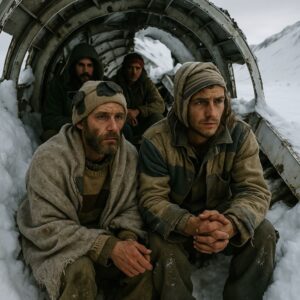There are certain archetypes that never lose their grip on the imagination. The witch, the vampire, the devil—all of them embody primal aspects of fear, rebellion, and temptation. But nestled among them, there’s one costume that doesn’t need blood or fire or darkness to command attention. She doesn’t need wings or fangs or horns. All she needs is a tight pencil skirt, a crisp blouse slightly unbuttoned, glasses perched on her nose, and stockings that hint at much more than modesty. The Sexy Librarian is one of Halloween’s most enduring viral icons because she thrives on contradiction. She takes an image that’s traditionally associated with quiet, rules, and order, and flips it into something daring, playful, and irresistible. She’s not about scaring you—she’s about making you lean in closer, drawn by the promise of knowledge, mystery, and just the right amount of mischief.
What makes the Sexy Librarian so powerful is the tension at the heart of the look. Librarians in our cultural imagination are figures of control: shushing voices, organizing chaos, maintaining order. They are the guardians of silence and discipline, the keepers of dusty tomes, and the overseers of rules. But Halloween is about rebellion. It’s about breaking free from rules, subverting expectations, and turning the ordinary upside down. The Sexy Librarian costume takes the idea of control and transforms it into temptation. The pencil skirt, usually a sign of modesty, suddenly becomes a spotlight for confidence. The glasses, symbols of seriousness, now frame flirtation. The stockings, once formal, now spark curiosity. This costume doesn’t just invite attention—it demands it, all while maintaining a clever wink that says: I know exactly what I’m doing.
Visually, the Sexy Librarian is designed for impact. The pencil skirt creates clean lines, accentuating curves with elegance and confidence. Paired with stockings, the look instantly blends sophistication with allure. The blouse, often white or cream, provides a canvas that can be styled modestly with a bow or unbuttoned just enough to suggest rebellion beneath the surface. And then there are the glasses—arguably the most powerful accessory in the entire look. They frame the face, sharpen the eyes, and create that unmistakable air of authority, even as they slide down the bridge of the nose with a mischievous smirk. It’s a costume made for performance, for adjusting glasses while raising an eyebrow, for tapping a ruler on a desk, for leaning forward as though grading more than papers. The details matter because they transform a simple outfit into an entire character.
The Sexy Librarian thrives in photos and videos because she’s not static—she’s interactive. Her props practically beg to be used: books stacked as flirtatious accessories, rulers wielded like playful tools, glasses that can be slid on and off with a smirk. Every gesture becomes an invitation, every pose a performance. On Instagram, the clean lines of the skirt and blouse pop against chaotic Halloween backdrops of cobwebs and neon. On TikTok, she’s the perfect subject for transformations—hair tied up into a bun, glasses perched firmly, then one snap and the bun drops, glasses slide down, blouse loosens, and suddenly the “strict librarian” becomes the “seductive librarian.” On X, she trends year after year because the internet cannot resist debating, sharing, and admiring the contradiction at the heart of the look. She’s not scary, but she’s unforgettable. She doesn’t hide in the shadows—she controls the spotlight.
Part of what makes her viral is how easy she is to adapt. Some Sexy Librarians keep the look classic—tight skirt, stockings, blouse, glasses, and maybe a stack of books. Others modernize it, adding leather skirts, bold lipstick, and heels that click with authority. Some lean into humor, carrying oversized glasses or giant novelty books as a parody of the trope. Others lean full-on sultry, with sheer stockings, fitted corsets, or plunging blouses that redefine what “library quiet” really means. That adaptability ensures that the costume never goes stale. Like the ever-expanding stacks of a library, the Sexy Librarian has endless interpretations, each one reflecting the personality of the woman wearing it.
But the reason she resonates isn’t just about looks—it’s about energy. The Sexy Librarian embodies confidence in a way that feels human and relatable. She’s not just showing skin—she’s showing control. She’s showing wit. She’s showing playfulness wrapped in sophistication. There’s something empowering about taking an image of strictness and formality and turning it into something unapologetically bold. For the woman wearing it, the costume becomes a declaration: I can be smart, I can be sexy, I can be both—and I’m going to have fun proving it. That empowerment doesn’t just stay with her—it radiates outward, filling the room with a charge that everyone feels. That’s why she dominates Halloween not just in person but online, because people don’t just admire the costume—they admire the confidence behind it.
Halloween is about transformation, and the Sexy Librarian is one of the purest forms of that idea. She takes a role rooted in rules and flips it into rebellion. She transforms silence into laughter, order into flirtation, modesty into mischief. She reminds everyone that the people who seem the most reserved often have the boldest sides waiting just beneath the surface. And that reminder is powerful, because it reflects something true about all of us: we all have contradictions, we all have hidden sides, we all crave moments when we can break free of expectations and reveal a version of ourselves that surprises the world.
That’s why the Sexy Librarian continues to trend year after year. She’s more than a costume—she’s an archetype of transformation, empowerment, and fun. She doesn’t rely on gore or gimmicks. She doesn’t need elaborate props or cinematic makeup. All she needs is a skirt, glasses, stockings, and the kind of charisma that turns heads and sparks conversation. She’s proof that sometimes the most viral costumes aren’t the ones dripping with fake blood or covered in sequins—they’re the ones that flip the script, the ones that subvert expectations, the ones that make people laugh, blush, and remember.
So when Halloween rolls around and the night is alive with monsters, superheroes, and creatures of the night, keep an eye on the room. Watch who everyone is watching, who people can’t resist talking to, who dominates selfies and videos. Chances are, it’s the woman with the books in her hands, the glasses on her nose, the pencil skirt that hugs her stride, and the stockings that say “rules are meant to be broken.” That’s the Sexy Librarian. That’s the viral queen of contradictions. And that’s why, year after year, she doesn’t just check out—she checks in as one of the most unforgettable icons of Halloween.































